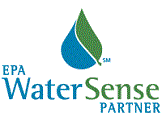What are the Issues with Faucets in Healthcare Environments?*
What factors can enhance colonization and amplify bacterial growth in faucets?
Water stagnation Water droplets are trapped inside the faucet aerator. Traditional laminar devices constructed with a thick pile of wire mesh screens trap water droplets even more.
Warm Water Warm room air (65°-80°F) keeps trapped water droplets warm.
Food Sediment and scale building up on traditional wire mesh screens provide the foundation and food supply for biofilm.
Is removing all spout-end devices a better alternative?
No spout-end device means no water stagnation in the faucet spout-end (all the water drains out) but...
- the water flow is unrestricted (no flow rate control) and can reach over 5 gpm; wasting water and energy.
- even if a separate flow regulator is installed, without a flow straightener at the end of the spout, the stream splashes and spreads contamination when washing hands or equipment.
- the inside of the spout is open to direct contamination by splashes when fluids are poured into the lavatory or sink.
What about low flow aerators?
While well-adapted to public bathrooms for hand-washing, where they save water and energy, low flow faucet aerators are not recommended for use in patients rooms or nurse stations. Among other things, they make filling a glass or a vessel a difficult and lengthy process.
Laminar devices: A better choice for hospital environments
To produce an aerated stream with up to 50% air, white and soft to the touch, air and water are mixed in the faucet aerator's mixing chamber.
While drawing air from the room around the faucet is not a problem in residential and commercial applications, it can be a concern in healthcare institutions including hospitals, senior care and medical labs. The room air can then contain bacteria that are best kept out of the drinking water and the fine droplets produced by the faucet aerator can add to the risk of contamination by inhalation
Laminar devices do not draw air into the water stream and produce a non-aerated crystal clear stream of 100% water.
Shop Laminar Aerators
*Neoperl, . "Neoperl."Care+Guard with Built In AgION®. 2007. Print.

I have already recommended you to a friend who is visiting. She is wowwed by the shower and can't wait to get home and see what kind of faucet aerators she has so she can place an order too. Thank you for providing people with such wonderful conservation options. read more>
- Margarate, CT

Enter your email address to receive monthly special offers and discounts delivered right to your in-box!



© 2021 Conservation Warehouse. All rights reserved. Website design by Solid Cactus.





